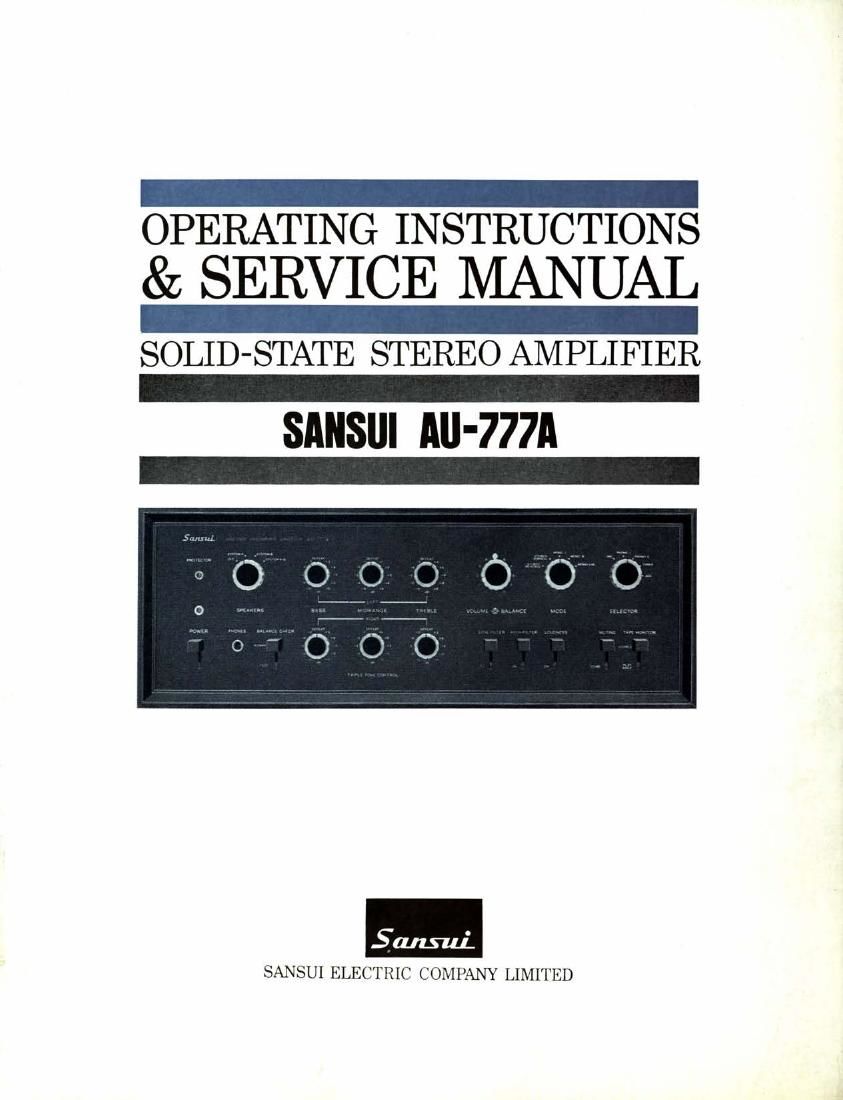Sansui AU 777 A Owners Manual
This is the 20 pages manual for Sansui AU 777 A Owners Manual.
Read or download the pdf for free. If you want to contribute, please upload pdfs to audioservicemanuals.wetransfer.com.
Page: 1 / 20
